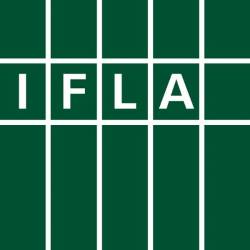
Call for Participation: Survey on Library Programmes and Services for People Who Are Deaf, Hard of Hearing, and Deafblind
February 15, 2018
The IFLA Library Services to People with Special Needs Section is inviting the library community to respond to a survey “to gather examples of modern day practice in the organization of library programmes and services that meet needs of people who are deaf, hard of hearing and deafblind.”
The survey is being conducted to support work by the Section towards the development of Guidelines for Library Services to People Who Are Deaf, Hard of Hearing and Deafblind.
Survey on library programmes and services for people who are deaf, hard of hearing and deafblind
Call for Examples
The IFLA Section on Library Service to People with Special Needs (LSN) is writing Guidelines for Library Services to People Who Are Deaf, Hard of Hearing and Deafblind.
For this purpose a survey is being conducted in order to gather examples of modern day practice in the organization of library programmes and services that meet needs of people who are deaf, hard of hearing and deafblind. The need for the new guidelines emerged due to the exceptional progress in information technology and growth of social media. This provides numerous new solutions and possibilities of adjustment of library programmes, services and content for this population. In addition these guidelines will cover information needs of the deafblind community, something that is not present in the previous edition of the guidelines.
The survey is conducted internationally from February 10th until March 31st 2018. Please, send your examples to: dunjamarija.gabriel@gmail.com and dorijana.k@gmail.com
You may download the survey as a Word or PDF document.
Thank you for participating, your experience is valuable to us!
Basic Information About Your Library:
1. Name.
2. Geographical location (country, city, address).
3. Email.
4. Type of library.
Library Programmes, Services, Materials and Space:
5. Which type of programmes and services for people who are deaf, hard of hearing and deafblind does your library organize (workshops, lectures, exhibitions, reading clubs etc.)? Please describe.
6. Does your library offer programmes and materials adapted to different age groups of people who are deaf, hard of hearing and deafblind (children, young adults, adults and the elderly) and members of their families? If yes, what kind of programmes? Please describe.
7. Does the library translate all its programmes to the sign language or any other possibility of adaptation of the content for people who are deaf, hard of hearing and deafblind (sign language interpreters, close vision and tactile interpreters, cued speech transliteration services etc.)? If yes, in what way? Is this provided automatically for all programmes or offered on demand?
8. Does your library mark important dates for the community of the deaf, hard of hearing and deafblind or in any other way sensitize the community about the needs of this population(International Day of Persons with Disabilities, World Deaf Day, International Week of the Deaf, The International Helen Keller Week etc.)? If yes, in what way? Please describe.
9. What kind of materials does your library acquire for people who are deaf, hard of hearing and deafblind (collections on Deaf culture and the deafblind community, materials with translation to sign language, films, video recordings in sign language, audio recordings with textual explanations, audio files available in transcript, captioned video materials, well illustrated materials etc.)? Please describe.
10. In what way does the library examine the needs of the members who are deaf, hard of hearing and deafblind when planning library programmes and services (surveys, personal contact, partnerships etc.)? Please describe.
11. In what way is the library space for the needs of people who are deaf, hard of hearing and deafblind designed (without barriers, with visual markings, with assistive communication technology etc.)? Please describe.
Employees and Work With the Users:
12. Does the library organize programmes for education of the library employees about ways to communicate and work with people who are deaf, hard of hearing and deafblind and what are the educational programmes for the librarians?
13. In what way do the library employees communicate with people who are deaf, hard of hearing and deafblind (lipreading, sign language, email, instant messaging, video chat, hand written notes etc.)? Please describe.
14. What assistive communication technology is used in the library (textual phone – TTY device, phones with increased volume, audio inductive loops, social media, tweet, email, chat, video calls, ask a librarian service etc.)? Please describe.
Cooperation:
15. In what way does the library promote library programmes and services for people who are deaf, hard of hearing and deafblind (public relations and marketing, public and social media, websites etc.)? Please describe.
16. Does the library cooperate with other libraries, organizations and institutions for people who are deaf, hard of hearing and deafblind to acquisition of materials about the Deaf culture and the deafblind community, sensitising social community and advocating integration into the community? In what way does the library cooperate? Please describe.
17. Do people who are deaf, hard of hearing and deafblind participate in advocating and promotion of the library programmes and services and in what way? Please describe.
Other:
18. How are the library programmes for people who are deaf, hard of hearing and deafblind funded? Please state the ways and sources of financing.
19. How do you measure the outcomes of the services and what are the outcomes of your services?
20. Does the library have policies about library services to people with disabilities including people who are deaf, hard of hearing or deafblind? If yes, please describe or provide a link to these policies.
Add a new comment